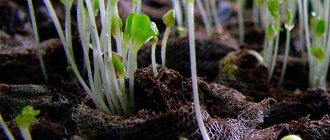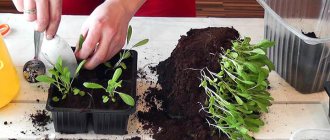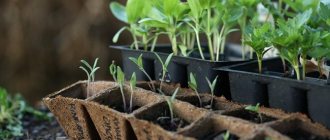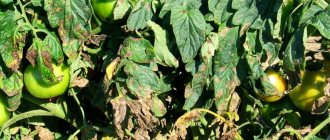Saffron is one of the most expensive spices, obtained from the dried flowers of the perennial plant saffron sativum (crocus). The plant is exported from Eastern countries (Iran, China, India). But they have already learned to grow it in other countries with a favorable climate for it. To obtain a well-known but inaccessible spice, you need large plantations, a hot climate and manual labor. To get 1 kg of the coveted seasoning you will need 200 thousand flowers. That's why saffron is so expensive.
What is saffron
There are about 30 varieties of Crocus sativus. They bloom in summer or autumn, depending on the variety. The flowers resemble a glass with six different shades of petals. The most common colors are lilac, purple, white, pink or yellow. In addition, petals may be of mixed shades. When the bud opens, the flower resembles a star with brick or orange-colored stamens - they are the long-awaited seasoning.
Kashmiri saffron, the most expensive of all saffron spices, is grown in Northern India. The plant has a purple color and long stigmas. This variety can rarely be bought in stores and markets.
What is saffron made from?
Real saffron seasoning looks like the stigmas of crocus sativus inflorescences, resembling long intertwined threads. There can be only three of them in one flower. The seasoning is created from a special part of these stigmas. These parts are assembled and separated by hand.
The collected stigmas are first dried in a special oven, and only then crushed. Each manufacturer has its own manufacturing techniques, but the end result is a product in the form of thin dried threads of a reddish, orange or brown hue. The color of the seasoning depends on the type of plant from which saffron is prepared. In second place is the Spanish crocus. There are two known varieties of it. In the first type, only the upper parts of the stigmas are used, and in the second, the entire stigma is used.
More than 80% of the total saffron market belongs to Iran. Entire farms are being built in the country to grow it; there is a lot of it and it is inexpensive. Therefore, it is more popular, but the quality is not inferior to Spain and India. The sale of this seasoning is one of the first places in the export of raw materials. A distinctive feature of Iranian saffron is its fairly long shelf life.
Indian saffron contains several types of turmeric. This spice belongs to plants of the ginger family and has nothing to do with saffron.
Nutritional value and calorie content
Saffron contains many vitamins: A, PP, C, group B and minerals (potassium, magnesium, calcium, sodium, zinc). It contains 14% proteins, 62% carbohydrates, 7% fats.
The calorie content per 100 grams of product is 310 calories. This is a strong spicy spice, 1 g of which lasts for a long time. Crocus is rich in essential oils that contain beneficial properties.
Chemical composition
Saffron contains chemical compounds that prevent disease and promote health.
Nutritional value of saffron (Crocus sativus) per 100 g.
| Name | Quantity | Percentage of daily value, % |
| Energy value (calorie content) | 310 Kcal | 15,5 |
| Carbohydrates | 65.37 g | 50 |
| Protein | 11.43 g | 21 |
| Fats | 5.85 g | 21 |
| Dietary fiber | 3.9 g | 10 |
| Folates | 93 mcg | 23 |
| Niacin | 1.46 mg | 9 |
| Pyridoxine | 1.010 mg | 77 |
| Riboflavin | 0.267 mg | 20 |
| Vitamin A | 530 IU | 18 |
| Vitamin C | 80.8 mg | 135 |
| Sodium | 148 mg | 10 |
| Potassium | 1724 mg | 37 |
| Calcium | 111 mg | 11 |
| Copper | 0.328 mg | 37 |
| Iron | 11.10 mg | 139 |
| Magnesium | 264 mg | 66 |
| Manganese | 28.408 mg | 1235 |
| Phosphorus | 252 mg | 36 |
| Selenium | 5.6 mcg | 10 |
| Zinc | 1.09 mg | 10 |
Benefits of saffron
Thanks to the rich chemical composition of the spice, saffron has many positive aspects. The benefits of saffron are that it:
- has a beneficial effect on the liver, lungs, heart and vascular system;
- improves the functioning of the intestines and genitourinary system;
- fights viral infections;
- helps cleanse the blood of toxic substances;
- lifts the mood;
- increases performance;
- speeds up brain function;
- helps normalize hormonal balance in men and women;
- strengthens the skeletal and muscular systems;
- calms and relieves stress.
Some experts suggest that saffron can cure a large number of different diseases. Therefore, it is often mixed into some medications.
Harm of saffron
A person can eat no more than 10 grams of seasoning at a time. Otherwise, the product can cause severe poisoning or death. Therefore, you should add saffron to your dishes in small portions so as not to harm your body.
It is contraindicated in diabetes mellitus, chronic cardiovascular diseases and peptic ulcers of the intestines and stomach. Pregnant women should not use it either, as the seasoning can cause uterine tone and cause miscarriage. Children under 3 years old should also not be given saffron.
Where is saffron used?
The spice has a strong aroma with a bitter taste. The use of saffron is not only that it is used as a flavor enhancer, but also for adding to the coloring of food products. It is also used:
- when coloring and flavoring food products;
- in cooking;
- as a food additive in sausages, cheeses and liqueurs;
- as a preservative;
- as part of medicinal products.
Saffron for weight loss
One of the beneficial properties of saffron is its ability to suppress appetite. That is, when consumed with food, a person quickly becomes full. Therefore, there is a gradual reduction in portions and, accordingly, weight. As a result, overall health improves without significant changes in diet.
Saffron oil
Benefits, properties, application
Oil from crocus stamens is not used in its pure form. It is used only as an additional ingredient, added to creams, masks and shampoos, both for the body and face. The ingredients in the oil have the following positive effects:
- rejuvenation, moisturizing and toning;
- getting rid of age spots and improving complexion in general;
- anti-inflammatory and wound-healing effect;
- aromatherapy.
When using hair oil, hair generally strengthens and grows, it becomes soft and shiny. This is evidenced by numerous reviews of women who used healing oil.
Main differences
The main difference between these flowers is that they belong to different families. They differ in the appearance of the inflorescence, stem and leaf shape, method of reproduction, and origin.
Marigolds have a wide variety of flower basket shapes and their colors, while crocuses of all types are similar in flower shape and color schemes. In terms of intensity of aroma, taste and color perception, saffron as a spice is much superior to marigolds.
For a more clear idea of the differences in the colors of marigolds and crocuses, you should consider their characteristics within the family and find out how these plants differ.
How is saffron used in cooking?
Saffron is an excellent seasoning for dishes such as rice, meat and fish dishes, vegetables and pea (bean) soups. It is added to dairy products, baked goods, coffee and tea. The seasoning gives the dish an unusual pleasant aroma and bitter taste.
Saffron is self-sufficient, so it is not combined with other spices. The only exceptions are salt and black pepper.
Saffron tea is popular in eastern countries. Its beneficial properties are irreplaceable. Tea is consumed as a tonic and restorative.
What dishes is saffron added to?
The seasoning is added both to main dishes of meat and fish, and as a side dish (most often it is rice). Most often it is used in the preparation of oriental dishes: lamb, pilaf, soups, sauces, sorbet, alcoholic drinks.
Saffron is added to fish dishes, seafood, baked goods and flour products (yogurt, ice cream). Oriental seasoning adds exquisite taste and aroma to dishes.
How to replace saffron in cooking
Not everyone can afford a spice like saffron, and not everyone can afford to add it in cooking. Gourmets and principled chefs claim that it is impossible to replicate the taste properties of saffron.
If you can’t buy an expensive spice, you can use a more affordable, similar option. For example,
- Safflower is able to convey some of the taste qualities of saffron and give the dish the appropriate color;
- Turmeric imparts the color of the dish as if using the original.
In the markets of many countries, safflower is sold under the guise of saffron. It is difficult to distinguish it from the original, but it has a less pronounced aroma and costs several times less. To distinguish a fake from the original, you need to add two threads of seasoning to 3 liters of water. If the water turns orange, it means you were not deceived. This is real saffron. Turmeric also does not have a specific odor and its color is closer to yellow, in contrast to the red color of saffron.
Where to start breeding?
If you have little experience in growing flowers or simply do not have the ability to carefully monitor all changes in your pets, you need to choose unpretentious plants. Primroses work well for this, particularly crocus. Planting and care in open ground will not bring much trouble. The main thing is to choose the right place and periodically seat it.
Saffron reproduces both by underground root system and by seeds. The first option is used more often.
Recipes
The taste of saffron is reminiscent of honey with a hint of metal, bitter-floral and spicy-hot at the same time. You need very little, but it will perfectly enrich and saturate any dish with a specific taste.
Ground saffron can be added to the dish during cooking or stewing. Thread-like stigmas in the amount of 2-3 pieces are pre-soaked in boiling water or milk. Let it brew for about 5 minutes. Then the resulting consistency is mixed into the dish.
You can also fry the stigmas in a dry frying pan. Then the pestles are ground into dust and poured in for half an hour. The resulting liquid acquires an orange tint, after which it can be added to the dish.
Do not add too much saffron. Its excess can lead to intoxication, an allergic reaction and even death. A teaspoon added during cooking will only worsen the taste of the dish. The food will taste bitter and disgusting.
Very often, saffron is used in confectionery and baked goods (desserts, cookies, ice cream, gravies). It is also popular for baking, stewing and boiling meat and fish dishes. The most optimal dose of saffron is 1 gram or one small pinch.
When adding saffron to recipes, you must adhere to the recommended proportions, administration and dosage. In addition, it should be noted that, like any product, saffron can cause an allergic reaction. Therefore, if you experience headaches, dizziness, nausea, vomiting or rashes on the body, it is better to stop using this spice.
Tea
Tea with the addition of saffron is very useful for coughs, runny nose and other colds, for cardiovascular disorders and problems with the urinary and reproductive systems. Its beneficial properties help even with depression.
Recipe:
Brew 2 teaspoons of black tea in half a liter of boiling water. After a couple of minutes, throw in 2-3 threads of saffron, add a little more water and let it brew for 15 minutes. Drink 200 ml of tea (a glass) no more than three times a day.
Milk with saffron
If you add seasoning to the milk, the color will change to a pleasant golden color and the drink itself will acquire additional beneficial properties.
The milk should be warm so that the seasoning will dissolve evenly. Recipe:
Bring 250ml milk to a boil. As soon as it boils, add 5 stigmas of seasoning, a teaspoon of honey and half a teaspoon of butter. Remove from heat. Pour from cup to cup several times, thereby saturating the drink with oxygen. It is better to take the drink before bed.
Cabbage
This dish belongs to Korean cuisine. Perfect for a diet table. For preparation you will need:
- half a cabbage;
- 1 onion;
- 2 cloves of garlic;
- 2 tbsp. spoons of sugar;
- 2 tbsp. spoons of vegetable oil;
- 1 tbsp. spoon of vinegar;
- 1 tbsp. spoon of saffron;
- half a teaspoon each of coriander and cilantro;
- red and black pepper, salt to taste.
Remove the top leaves from the cabbage, rinse the head of cabbage under running water, cut into large pieces and pour boiling water over everything completely. After 10 minutes, when the future dish has steeped, drain the water.
Separately, boil 1 liter of water and dissolve all the spices in it, including saffron, vinegar, garlic, sugar and salt. Cut the onion into small cubes, fry it in vegetable oil and pour it into water with spices. This entire mixture must be boiled over low heat.
Pour the saffron-garlic marinade over the cabbage, let it cool and put it in the refrigerator for a day for final preparation. The next day, the resulting culinary masterpiece is ready for consumption.
In cosmetology
Saffron is a long-known anti-aging remedy. Its important beneficial property is that it perfectly fights problem skin and gives vitality to hair. This seasoning is added to creams or masks, and also taken orally.
Cream
Cosmetic creams containing saffron are sold in stores selling Ayurvedic and Indian products. But you can cook it yourself. To do this, take the simplest and most natural cream, for example, a baby cream, and add a few drops of saffron oil to it. The resulting cream is applied to clean skin. The saffron mixture makes the complexion smooth and fresh, removes fine wrinkles and rashes, and eliminates other skin problems.
Oil
To obtain saffron oil, steam distillation and the extraction method using a special solvent are used. The oil has a pleasant rich hue and a spicy-bitter aroma. It is used by cosmetologists in masks and creams, and also as an independent ingredient.
Where to buy saffron and how much does it cost?
When purchasing saffron, you should keep in mind that 1 gram of the spice cannot cost less than $1. Otherwise, it is a fake - either safflower or turmeric. These seasonings are similar to each other and are easy to confuse. But only a specialist can determine the quality of the product.
It is better to buy spices in specialized stores. And let this store be better in some Asian country that specializes in growing and selling saffron. In the markets, the price range for saffron is from $500 to $30,000 per 1 kg.
How to choose quality saffron
Only a highly qualified specialist or a true gourmet can confirm the authenticity of a spice such as saffron. In the East they were once even punished for selling counterfeit saffron, but now the laws are not so severe.
If saffron is sold for less than $1, then it is not a real product. For example, it is very difficult to determine the difference between Imeretian saffron and American safflower. You cannot say that you bought a low quality product. This is a different spice with a different taste and aroma from crocus. Only high quality saffron has a unique smell and a slightly bitter taste.
When looking for a good spice, it is better to pay attention to saffron in the form of thread-like stamens, since this spice is rarely sold in ground form. Instead of saffron, they can easily sell turmeric, safflower or even marigolds. The color of the stigmas should be brick or purple. But not yellow, pink or crimson. When opening a container of spice, the buyer can immediately feel the sharp saffron smell.
Real saffron looks like an open tube with teeth along the edges and a narrowing at the bottom. The length of the pistil is up to 5 mm, and the lower part should not exceed 1 cm.
The color of the threads of high-quality saffron should be a crimson-red “brick” shade, but not pink or crimson. These are real spices.
If the stamens are of different lengths and yellow threads are found among them, then the spice is of low quality. The yellow strings are most likely mixed in corn silks or broken stamens that do not contain the spice.
The saffron solution used to color dishes should be red-orange in color. If it is fake, the shade will most likely be deep yellow.
When using saffron, the main thing is not to overdo it, but to use only as much as necessary. It is not for nothing that this spice is considered a symbol of moderate consumption.
Description
Saffron is an aromatic seasoning and natural food coloring that is obtained from the flowers of the crocus plant. The herb is rightfully considered one of the most expensive spices, because to grow and harvest it requires a lot of effort and time. But the main questions are: “How to use aromatic seasoning correctly? What varieties are there and how to choose a spice, since there are a lot of fakes? What benefit can a spice bring to the human body, and what harm?” The answers to all these questions and even a little more can be found in our article.
Storage
It is recommended to store saffron spice in a dark place, away from sunlight. This could be in a kitchen cabinet or in a desk drawer. It is also not recommended to leave this seasoning near the stove. The humidity in the storage room should not be high. Sun rays and moisture have a detrimental effect on the beneficial properties and taste of spices. The best thing to do is to hide the saffron in a container with a tight-fitting lid.
Most often, saffron stigmas are sold in transparent and airtight packaging to preserve the integrity of the seasoning and its original appearance. It is not recommended to store saffron for more than 6 months. This is due to the loss of aroma, color and beneficial properties.
Imeretian variety
Another name is zafaran. Belongs to the Asteraceae family. An annual herbaceous plant. According to the botanical description, Imeretian saffron is almost identical to marigold :
- The stem is erect, up to 50 cm high.
- Leaves up to 11 cm long, finely dissected.
- Inflorescences appear in mid-summer.
You can also prepare a spice from Imeretian saffron. But it will differ from real saffron in taste, aroma and price (much cheaper).
Important! The beneficial properties of Imeretian saffron are significantly inferior to the real thing.









